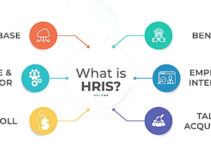Introduction
Things and incidents are bound to happen when a group of people works in an organization. Such breakdown and failure disrupt the flow of work and other organizational operations. Today, we’ll discuss what is incident management; its process, importance, various stages involved in the resolution, and improvement tips.
What is Incident Management?
Incident management comprises a set of actions and procedures that an organization takes in order to address a critical event. Like detecting and communicating the incidents, finding the responsible personals, tools being employed, and steps being taken to solve the issue.
Many businesses, companies, and industries use incident management processes. The range of incidents could be maintenance and repairing of physical infrastructure, needing the care of healthcare professionals, or the failure of the IT system.
Importance & Benefits of Incident Management
Incident management involves around set of solutions, processes, and practices that allow the company to identify, recognize, diagnose, and address the incident. It’s a critical function for companies of various sizes in order to meet compliance standards.
The process of IM makes sure that the IT professionals could deal with the issues and vulnerabilities of the company. The quick response of the company lowers the impact of the incident, damaging rate, and makes sure that the system would become operational again as planned.
If the company doesn’t have a proper incident management system in place, then it would lose revenue, productivity, and important data. It could also be responsible for the breach in SLAs (service level agreements). When the problem is minor, then the company’s IT professionals would spend their time finding and correcting the problem.
Benefits of Incident Management
Some of the main benefits of applying incident management strategy are as follows;
- Better customer experience
- Data protection
- Reducing wastage of time
- Better MTTR (mean time to resolution)
- Incident prevention
Most importantly, it allows the company to lower its cost. Gartner’s study reported that wasteful service time could cost the company in terms of 300K per hour. Other financial impacts are losing customers and regulatory fines. Businesses and companies can save a lot of costs by investing upfront in the IM.
Stages of Incident Resolution
Some of the main steps in the incident management process that the team deals with the problem effectively without avoiding any aspects, they’re as follows;
Identifying Incident/Logging/Categorization
The team recognizes the problem through solution analyses, user reports, or manually. After identifying the problem, the next step is categorization, investigation, and logging. However, the reason categorization is important is because it helps you to know how to deal with the incident and allocate the resources.
Incident Notification & Escalation
The company receives the incidence alert at this stage when they happen. The timing of the reporting may vary depending on the problem identification and categorization and how it has been dealt with. However, if the problem is small, then log the details, and send the notification without making it an official alert.
Escalation occurs when the person responsible for the response procedure assigns the categorization. If the company manages the problem automatically, or the escalation would happen transparently.
Diagnosis & Investigation
After assigning the tasks of the problem, the team would start to diagnose the cause, type, and solutions to the issue. Once you have diagnosed the problem, next you have to take the possible redemption and precautionary steps. It comprises of sending notifications to the authorities, customers, and staff about the issue and possible disrupted services.
Recovery & Resolution
Recovery and resolution mean finishing the root cause of the threats and problems and restoring the system in order to make it fully functional again. It depends on the severity and type of the issue and taking various steps in order to make sure that such problems don’t happen again.
For instance, if the problem comprises malware-infected files, and they can’t erase the infected files and make the system operational again. You should develop a clean copy for your tainted, separate the infected files, and replace the whole system in order to make sure that the virus doesn’t spread and is contained.
Incident Closure
Closure of the problem means final documentation and taking the evaluating steps during the response. The evaluation allows you to point out the weak areas for improvement and take precautionary measures to avoid problems in the future.
The closure of the incident also comprises offering a report to the customers, board members, administrative team. The reporting of information allows you to rebuild and regain the trust of stakeholders and develop transparency about the company’s operations.
Improvement Tips for Incident Management Process
Some of the main tips that would help you to improve the incident management process and make it more effective and reliable. They are as follows;
Support Employees & Training
If you offer training to the employees at different levels of the company, then it would benefit the IM processes. For instance, when non-tech employees could recognize and appropriately report the problem, then the tech team would respond quickly and resolve the problem without wasting much time. When IT and tech employees have proper training and expertise, then they can work effectively and use the tools efficiently.
Set Alerts
When you set alerts on everything, then it results in the form of avoiding alerts. When your team members start avoiding alerts, then they would overlook some of the main incidents and it would delay the response time. In order to deal with this situation, you should carefully categorize events and those categories in terms of alerts.
When it comes to defining the incidents, you should define the service level indicators. These indicators would help you to prioritize the root cause of the problem from the surface symptoms. One alert notifying the team that the server has the problem is more useful than 50 notifications without mentioning the actual problem.
Preparing Team
After prioritizing the alert notifications, next you should allocate a responsible person that would respond to the alert. Scheduling it on call makes sure that the responder has the permission and appropriate skill. You should adjust the on-call duties relevant to the efforts of employees.
It makes sure that the on-call duty doesn’t overwhelm them. For instance, if one employee is responding to various problems in his shift, and the other employees that aren’t responding they have more off-call.
Communication Guidelines
Effective communication plays a significant role in the collaboration of the team, and you can protect it by developing guidelines. Those guidelines mean that what channels the team members should use what they should expect in those channels, and how they should document the communication.
The guidelines would set the standards that how the employees should communicate, and it would also diffuse blame game and stress. When you document the communication, then they verify the content and deliver the information without omitting the details.
Streamlining Change Processes
It’s important to confirm and verify the required changes for the response because the expertise and the system of the responder would be different. It protects responders from making harmful changes or waiting for the protocols. It should also be clear that what type of changes they can make or they require approval.
If the system requires approval from the CAB (change advisory board) for changes, then you have to ensure that the board is easily available. If the CAB isn’t available readily, then you should develop emergency protocols to avoid the changes.
Improving System from Learned Lessons
You should study the reviews and try to find out the reason for the problem, what precautionary measures you can take to avoid future incidents. If you have developed some guidelines, then assign them to the team and they can follow them. Reviews also help you to make sure that you have completed the documentation.
Conclusion: What is Incident Management? Importance, Stages, Tips
After an in-depth study of what is incident management; its importance, benefits, steps in the resolving process, and tips for improvement, we’ve realized that IM is a very effective investment that could save a lot of unnecessary costs.

Ahsan Ali Shaw is an accomplished Business Writer, Analyst, and Public Speaker. Other than that, he’s a fun loving person.


